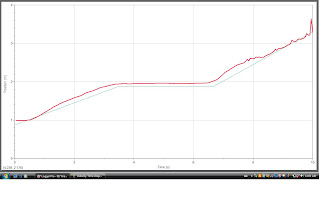Energy can be classified as either Potential Energy or Kinetic Energy. Energies can be measured in joules, however, scientist also uses other measurment for certain type of energy.
Kinetic energy: energy of motion - waves, molecules, objects, substances, and objects.
Potential Energy: stored energy
Sound Energy: the energy is transferred through the substance in a wave.
Thermal Energy: the vibration and movement of the atoms and molecules within substances. As an object is heated up, its atoms and molecules move and collide faster.
Radiant Energy: electromagnetic energy that travels in transverse waves. Visible light, x-rays, gamma rays and radio waves are radiant energy.
Chemical Energy: energy stored in the bonds of atoms and molecules. Biomass, petroleum, natural gas, and coal are examples of stored chemical energy. Chemical energy is converted to thermal energy when burned.
Mechanical Energy: energy stored in objects by tension.
Motion Energy: energy stored in the movement of objects. The faster the object moves, the more energy is stored.
Nuclear Energy: energy stored in the nucleus of an atom . Combining or spliting nucleus can produce large amount of energy. Fission and Fusion produces nuclear energy.
Gravitational Energy: energy stored in an object's height. The higher and heavier the object, the more gravitational energy is stored.
Electrical Energy: energy stored in a battery, and can be used to power a electric or electronic Electrical energy is delivered by charged particles called electrons.
Motion Energy: energy stored in the movement of objects. The faster the object moves, the more energy is stored.
Nuclear Energy: energy stored in the nucleus of an atom . Combining or spliting nucleus can produce large amount of energy. Fission and Fusion produces nuclear energy.
Gravitational Energy: energy stored in an object's height. The higher and heavier the object, the more gravitational energy is stored.
Electrical Energy: energy stored in a battery, and can be used to power a electric or electronic Electrical energy is delivered by charged particles called electrons.




























